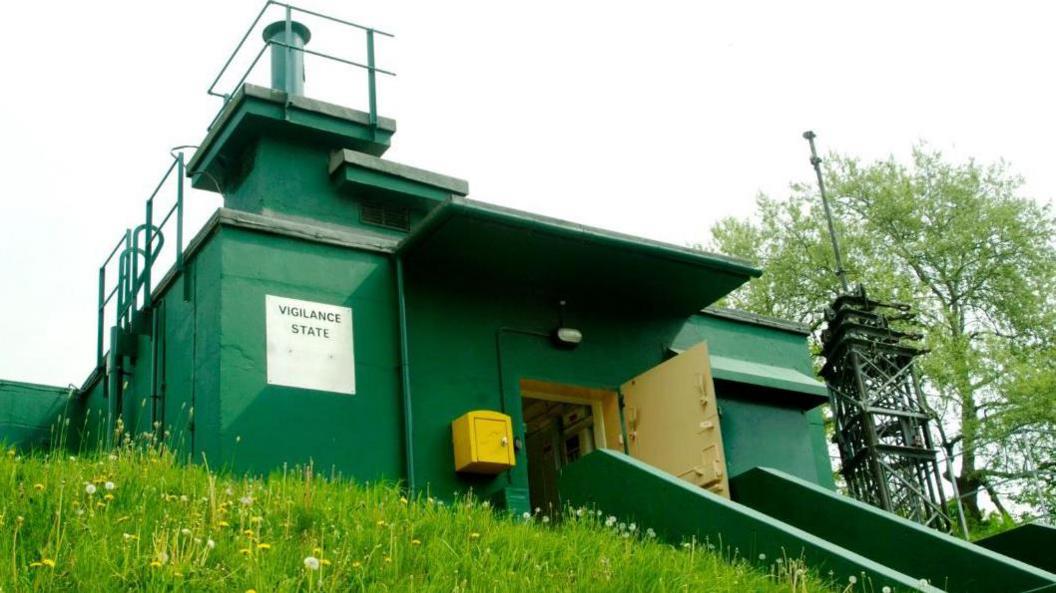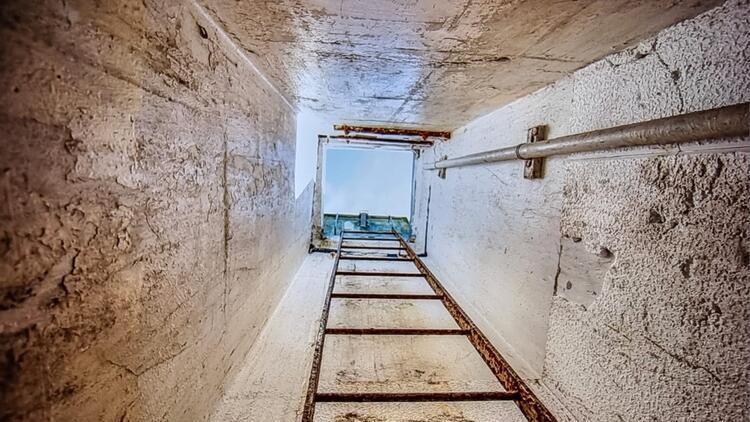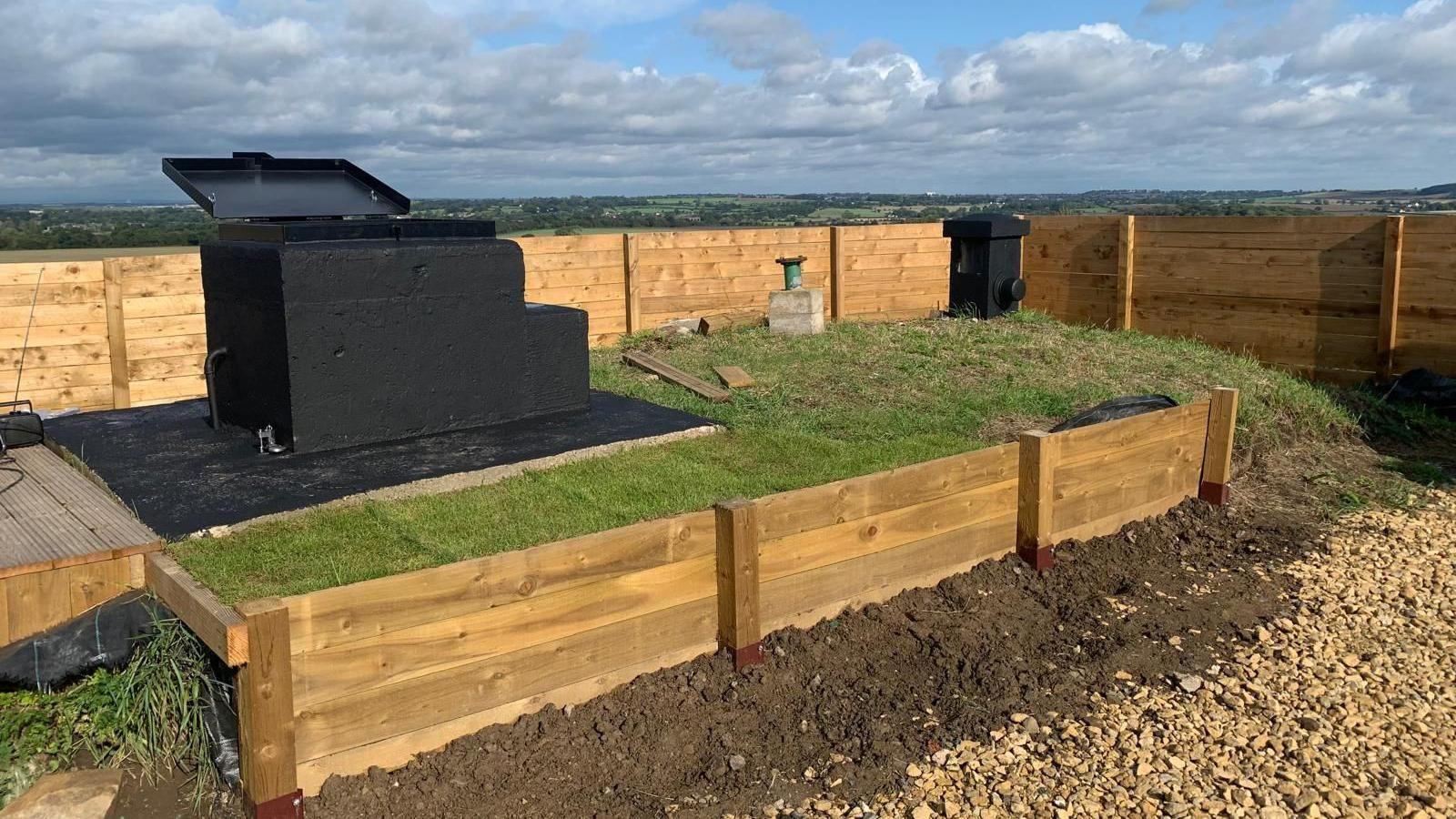Call for stories from nuclear bunker volunteers

The York Cold War Bunker was operated by the Royal Observer Corps and is now an English Heritage attraction
- Published
People who volunteered to work in a Cold War bunker in the case of nuclear attack have been asked to come forward to help bring wider recognition to the Royal Observer Corps (ROC).
The ROC had more than 20,000 personnel at its height and made a significant contribution to national security during World War Two and the Cold War before it was disbanded in 1995.
An appeal has gone out to trace the surviving members of staff who were assigned to the bunker in Acomb, York, to mark the ROC's 100th anniversary. The bunker is now an English Heritage attraction.
Kevin Booth from English Heritage said: "People who served there, engineers, government scientists - I'd love to hear from you."
Mr Booth added: "In the mid-1950s there was a recognition that nuclear conflict was becoming a reality.
"Observers were posted underground in a bunker with clever little devices which could detect if a bomb had gone off."
He said the role of the volunteer observers in York was to co-ordinate information about nuclear detonation.
"A terrible thought: how big was the bomb, how powerful, how much radiation was coming from it and what was the likely area of devastation that had been caused?"
He added: "The ROC was a sort of semi-hidden secret. It was known they were there with a nuclear role to protect society should it ever come, and yet members signed the Official Secrets Act.
"I've met a number of people who live in Acomb and say they never knew that bunker was there."
Mr Booth said he was "particularly interested" in people who worked at the York bunker for a few years "and then went off and did something else", or who were there when it closed down in 1991.
"I want to know why they joined and spent every week training. It was a huge commitment to be part of that organisation."
Listen: The York bunker that's a Cold War time capsule
Hearing from ex-volunteers from the bunker known as ROC 20 Group Control would, Mr Booth said, "deepen our sense of the people and atmosphere of this concrete bunker, that we have in the suburbs of York".
The bunker was built in 1961 and was one of around 30 similar structures in the country. It acted as a regional headquarters and control centre, and could accommodate 60 ROC personnel. They would have tracked and monitored the spread of radioactivity.
The site had its own power generating plant, kitchen, canteen, dormitories and map room.
The York bunker is the only one of its kind that has been preserved in its original condition, with the others having been abandoned, demolished or converted for other uses.
Get in touch
Tell us which stories we should cover in Yorkshire
Listen to highlights from North Yorkshire on BBC Sounds, catch up with the latest episode of Look North.
Related topics
More stories like this
- Published22 February

- Published21 November 2024
